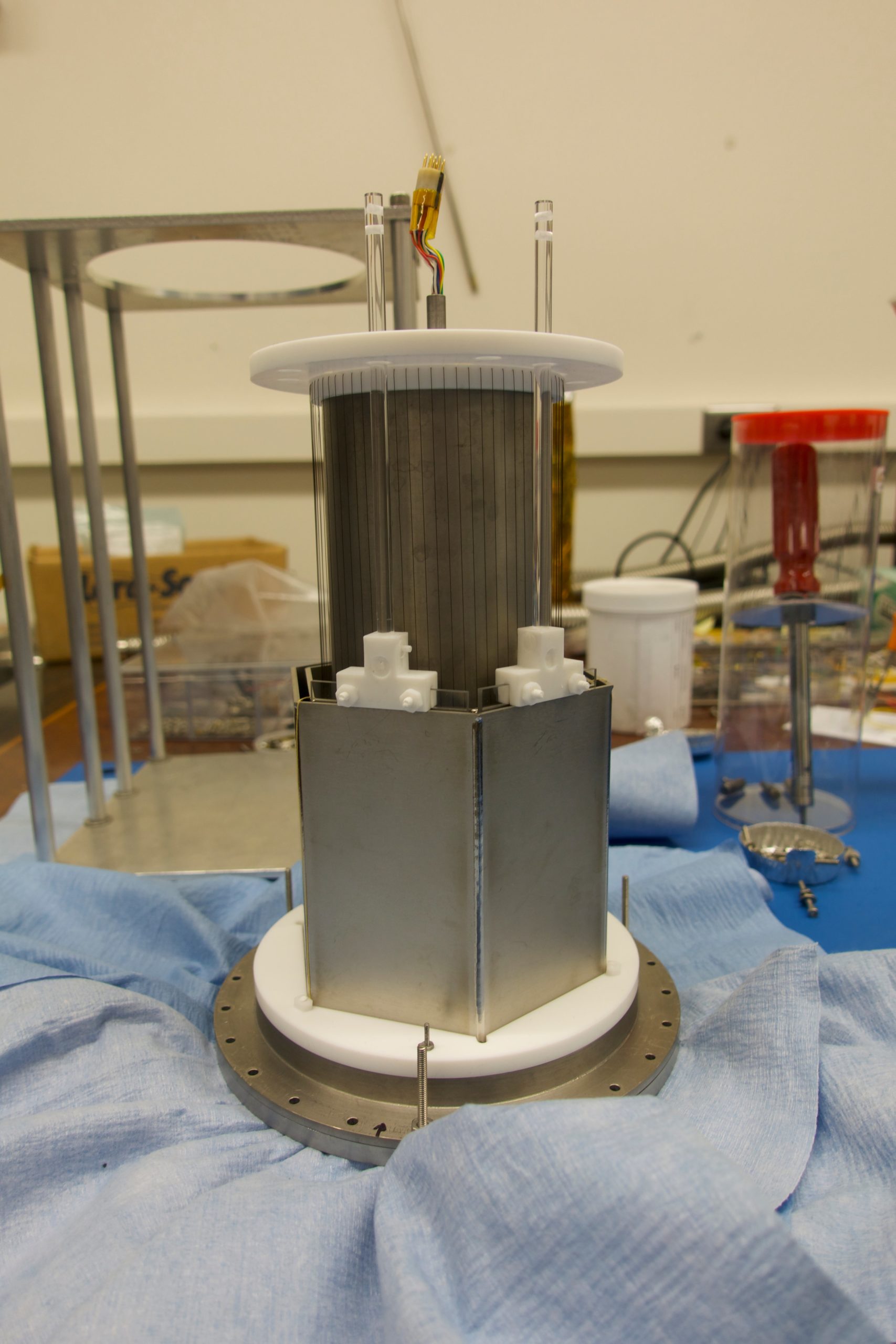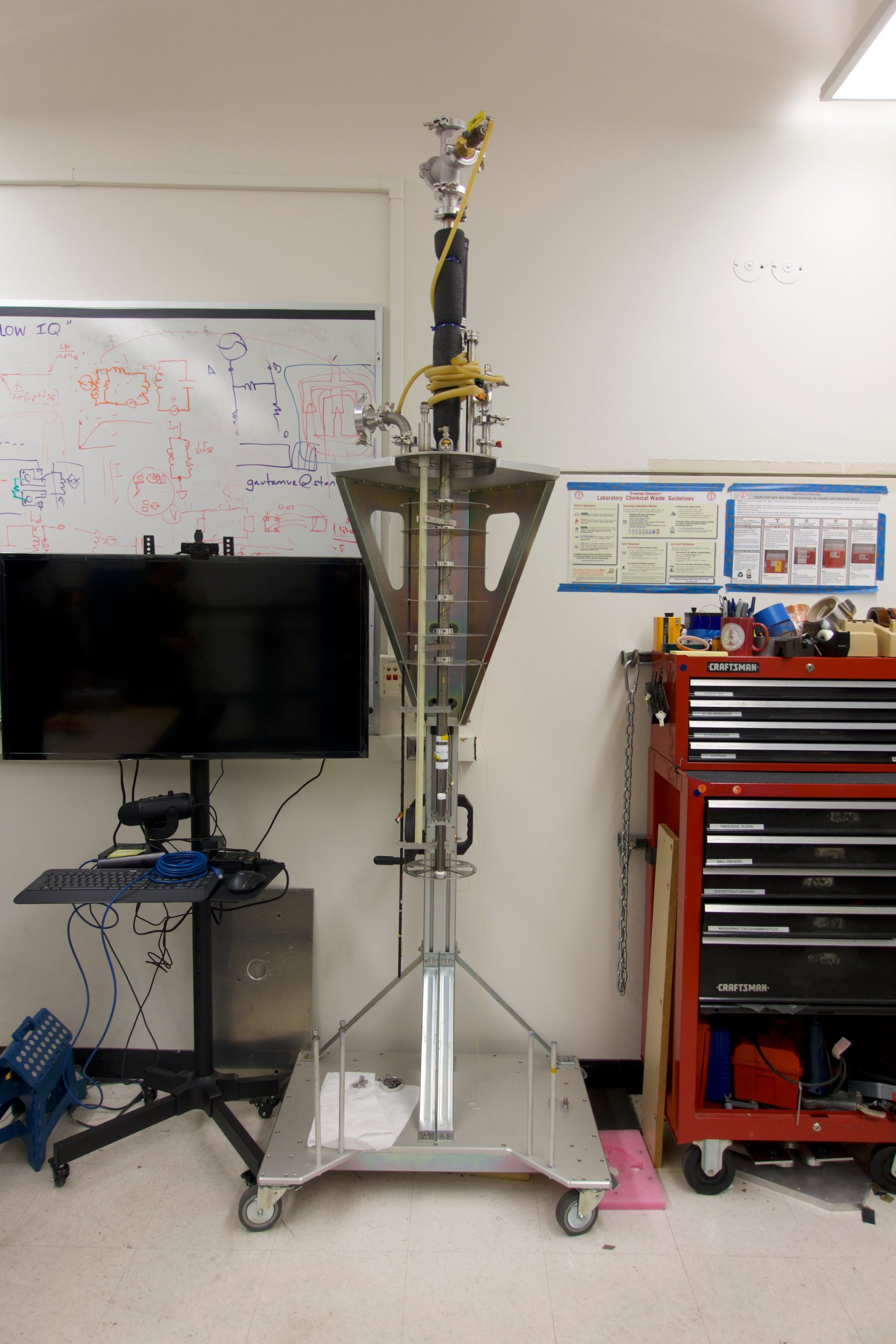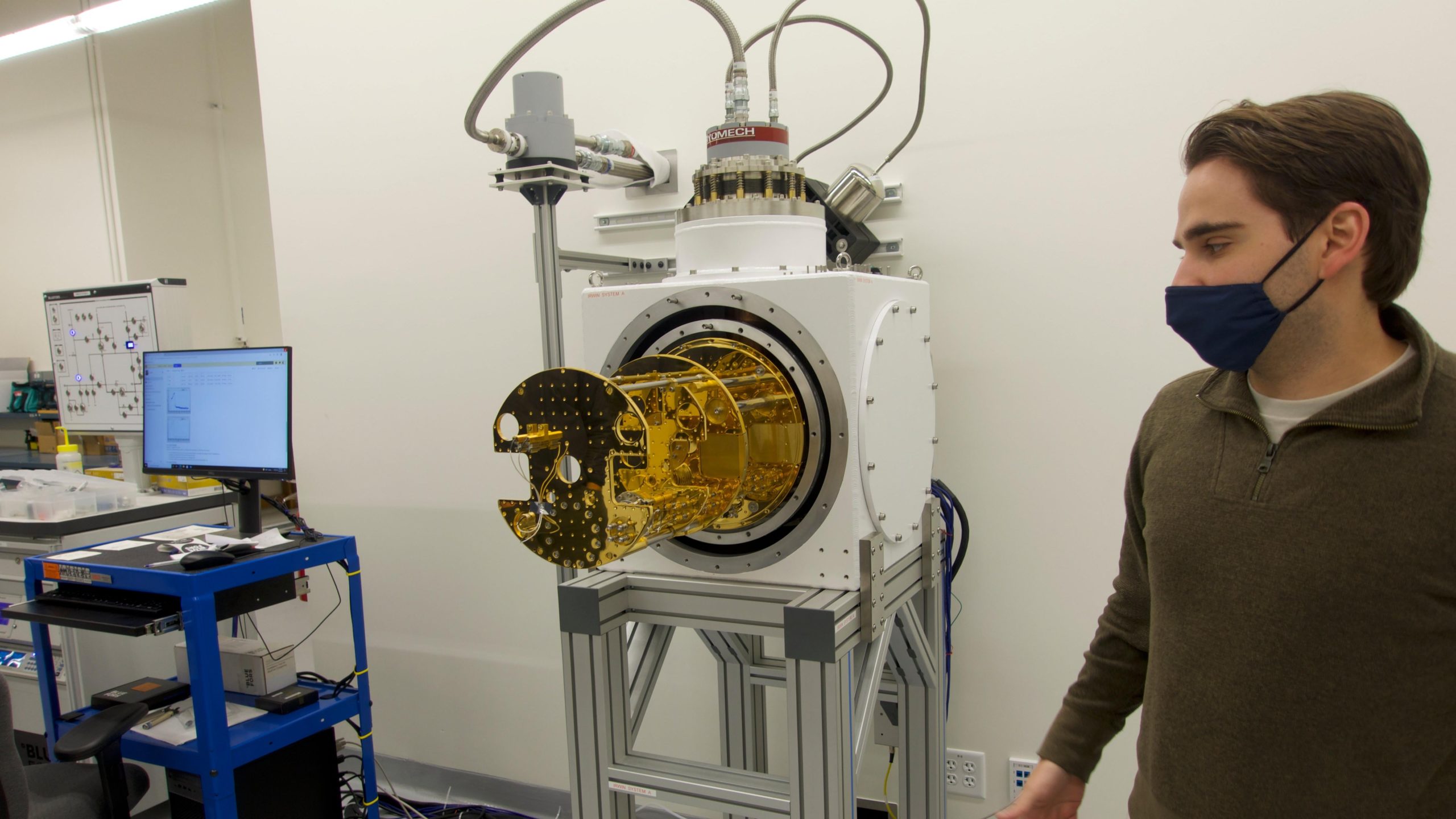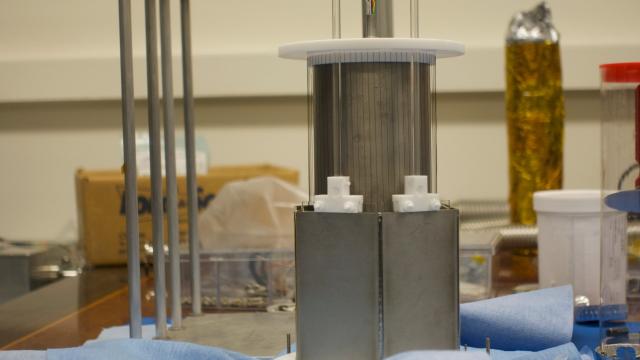Physicists at Stanford University have built a contraption they hope will detect dark matter, though exactly which theoretical particles they think they’ll find — hidden photons or little blips called axions — is still a question mark.
Hidden photons are thought to be very similar to regular photons, aka particles of light, except that they have mass and interact much more weakly with ordinary matter, hence their hidden-ness. Axions are a type of subatomic particle (a boson, to be exact) whose existence, if proven, could solve a longstanding problem with the way physicists understand the universe.
Dark matter certainly seems to exists, since its gravitational effects can be seen in nearly all galaxies. But while dark matter can be observed indirectly, whatever actually constitutes it, in part or in total, has never been detected.
The culprit for dark matter isn’t necessarily just one thing; there could be multiple reasons why about 27% of the universe appears to be dark matter. Popular candidates include Weakly Interacting Massive Particles (WIMPs) and the much less massive axions, hidden (sometimes called dark) photons, and a class of objects known as massive compact halo objects (MACHOs). WIMPs used to be the forerunning candidate for dark matter, but numerous elaborate experiments set up to detect them have turned up “a whole lot of nothing,” as Gizmodo reported in 2020.
“The axion — it’s always a little tricky to explain, but there’s a couple of reasons that physicists are generally so excited about it,” Peter Graham, a theoretical physicist at Stanford University, told Gizmodo, “One of which is, it was predicted for other reasons, but then realised that it would actually naturally be a good dark matter candidate.”
Named for a laundry detergent, axions are not described in the Standard Model of particle physics, but they would explain a frustrating problem in the field: that some predicted characteristics of the neutron don’t occur in nature. (Physicists, as you might expect, are big fans of Occam’s Razor: the idea that the simplest solution is probably the right one — no need to overcomplicate things.) But in order to know whether axions are indeed triggering that aberrant behaviour in neutrons, researchers need to find one.

“It’s the only really strong way to solve this problem with the Standard Model,” Kent Irwin, a physicist at Stanford University and the principal investigator of Dark Matter Radio, told Gizmodo. “Dark matter aside, if the axion doesn’t exist, it would cause real headaches for the Standard Model.”
The Dark Matter Radio project is attempting to detect hidden photons in a specific frequency range by methodically turning the dial, in what amounts to a patient, sweeping search of the wavelengths where such a particle could sound off. Later generations of the radio will hunt axions.
As far as subatomic particles go, some are only very small, while others are extraordinarily so. Some are massive enough to be detected smashing into other matter with relative ease, like the collisions that happen in particle colliders. Other particles behave in such an elusive manner that they are more easily detected as waves, because of how diffuse they are in space.
“[An axion] is so light that quantum mechanics tells you that it actually has to be spread out over a very large distance,” Graham said. “You can think about it more as the background wave, a background fluid that you’re kind of immersed in.”
If dark matter is at least in part axions or hidden photons, then the stuff is flowing through you and me in droves every second. Like neutrinos, the theorised particles are simultaneously omnipresent throughout ordinary matter because of their abundance and practically transcendent of it because of how little they interact with it. Dispersed as they are theorised to be, axionic waves could be anywhere from a few feet wide to football fields across.
That’s why Dark Matter Radio is searching for dark matter particles by looking for their background, or a specific frequency they travel on, similar to how a given radio wave can only be picked up on the frequency it’s transmitting on. This particular radio needs to be shielded from every other kind of wave, so it’s dunked in a dewar of helium cooled to just above absolute zero. (A dewar is basically a vacuum flask — and in this case a vat — to keep materials at a certain temperature, in this case to keep the helium very cold.)
The current Dark Matter Radio experiment is the prototype, or Pathfinder, for larger projects down the line. It consists of a litre-volume cylinder made of superconducting niobium metal, around which is tightly wound niobium wire. It looks a bit like someone wound guitar string on a spool’s vertical axis instead of its horizontal axis. That’s the Pathfinder’s inductor. If a hidden photon resonating at the frequency the Pathfinder was tuned to passed through it, the change in magnetic field would induce a voltage around the contraption’s inductor.

“The null hypothesis is that there shouldn’t be any radio waves inside of that box unless, in this case, hidden photons, which are our particular flavour of dark matter,” said Stephen Kuenstner, a physicist at Stanford University and a member of the DM Radio team. Hidden photons “can pass through the box and they have some probability of interacting with the circuit in the same way that a radio wave would,” Kuenstner said.
To amplify any signal the Pathfinder picks up, there’s a hexagonal shield of niobium plates sheathing the aforesaid components that acts as a capacitor. That amplified signal is then transported to a quantum sensor called a SQUID (a Superconducting QUantum Interference Device), a technology invented by the Ford Motor Company in the 1960s. The SQUID lives on the bottom of the radio and measures and records any signals picked up.
The smaller the expected mass for the axion becomes, the more elusive the particle is, as its interactions with ordinary matter are proportional to its mass. So it’s important that the next generation of DM Radio becomes more sensitive. The way the experiment is set up, “the frequency on the dial is the mass of the axion,” Irwin said. Convenient! The mass of these particles doesn’t even compare to the smallest things you might think of, like atoms or quarks. These particles would be somewhere between a trillionth and a millionth of an electronvolt, and an electronvolt is about a billionth of a proton’s mass.
The Pathfinder’s room is cosy, and looks a lot like an ordinary physics lab but for the menacing-looking rig that sinks the Pathfinder into the helium and the large tanks of helium gas that are chained to the wall in case of earthquakes. In 1989, Irwin was a graduate student at Stanford, working in the university basements when the 6.9-magnitude Loma Prieta quake struck the area, knocking fire extinguishers off the walls. Safe to say the lab’s taking no chances with the helium (though not flammable, the gas can displace oxygen, causing asphyxiation).
The helium Pathfinder uses is gaseous, and remains a relatively warm 4 kelvin (in other words, four degrees above absolute zero), but the next experiment — Dark Matter Radio 50L — will use liquified helium, cooled to less than one degree above absolute zero. All the better for hearing dark matter with.
DM Radio 50L sits in the corner of a large room in the Hansen Experimental Physics Lab at Stanford. The room looks a little bit like the TV room in Willy Wonka’s factory; it has high ceilings, lots of inscrutable equipment, and is glaringly white. Two 1.83 m-tall dilution refrigerators on one side, abutting a deep closet, are the radio. The two machines are fed gaseous helium sitting in tanks in the next room, which they then cool down into liquid helium of a frigid 2 kelvin. Magnets inside gold-plated copper and aluminium sheathes will do the job of converting any detected axions into radio waves for physicists to interpret.
“The particle physics community is — the analogy is often said — just like a battleship. It takes a while to turn and it has a lot of momentum,” Irwin said. “So even though I think that there’s a lot of reasons to believe that these radio-like dark matter signals are more attractive — the axionic signals — than WIMPs, there’s still a lot of giant experiments searching for little things, which is good.”

Other experiments on the axion hunt include the ADMX experiment at the University of Washington, the QISMET experiment at Fermilab, the ABRACADABRA experiment at MIT, and the HAYSTAC search at Yale. DM Radio is similar to several of these, but it is searching for axions in a different range. In concert, the suite of axion hunts around the United States and beyond are constraining the possible masses of the axion.
Dark Matter Radio itself should be considered more of a family of experiments: The team is currently working with the Department of Energy on a next-next-generation experiment that will look for axions in a cubic metre, hence its name of DM Radio-m³. In the more distant future, Irwin and his team have aspirations for a project called DM Radio-GUT, which would be closer to the scale of some of the largest physics experiments on the planet.
Taken together, the experiments are clearing a vast swath of the most promising range for axion mass. All told, Irwin said, the favoured area for axion mass could be searched in the next couple of decades using larger experiments — though the team could simply find an axion before then, potentially ending the hunt for dark matter in its entirety. With enough listening, we might have an entirely new particle for the textbooks. Or maybe there’ll be radio silence.
